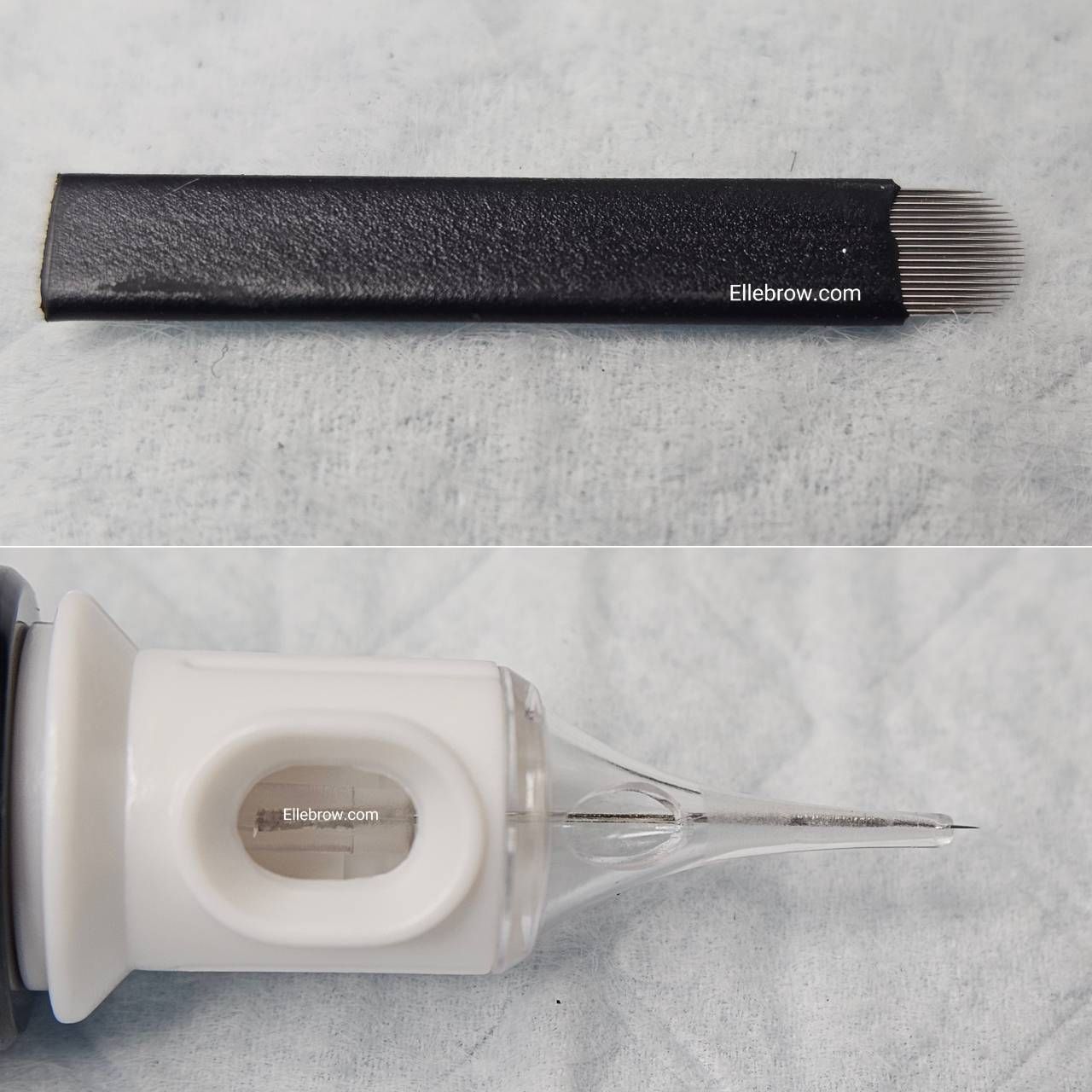Microblading vs. Nano Brows: Understanding the Differences
Nano Brows vs. Microblading
Eyebrow enhancements have become a pivotal aspect of beauty routines, with Microblading and Nano Brows leading the trends. Each technique brings a unique approach to achieving the perfect brows. This guide aims to compare and contrast these popular methods, assisting you in determining which is the ideal fit for your eyebrow aspirations.
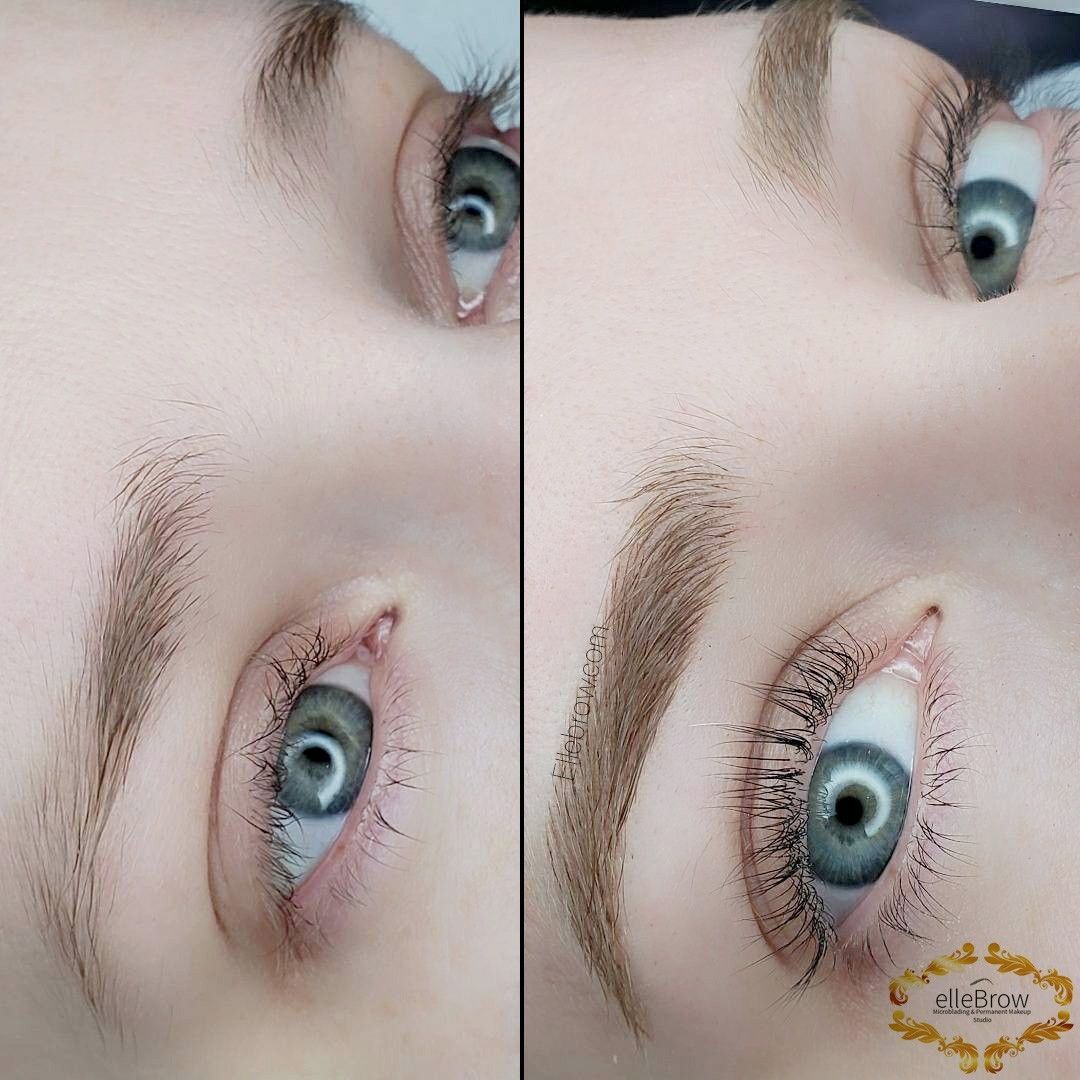
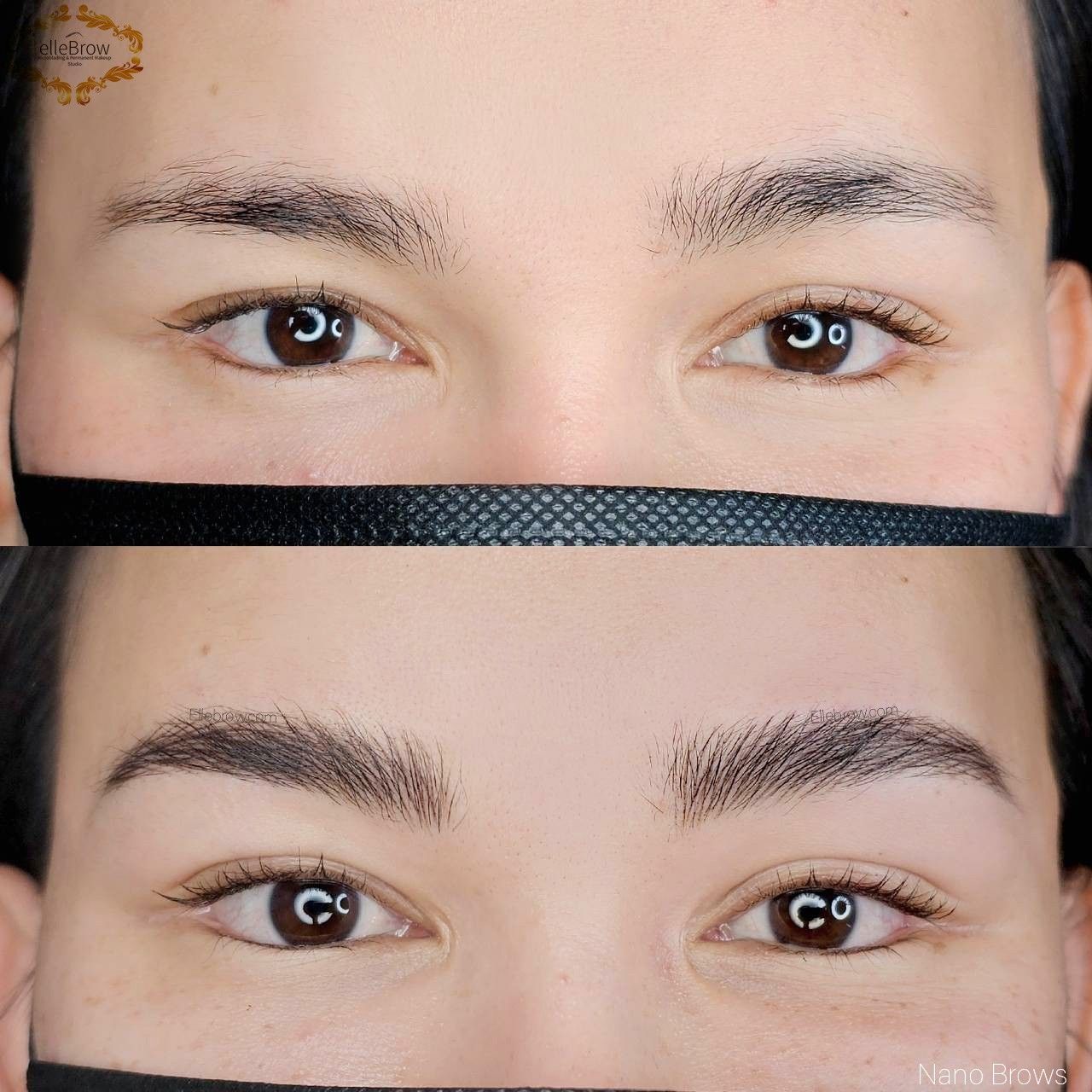
Microblading: The Art of Natural Brows
Microblading stands out for its ability to create fine, hair-like strokes, using a hand-held tool to deposit pigment into the skin. This technique is ideal for those seeking to add definition to sparse or thin eyebrows. Microblading not only enhances the natural brow shape but also offers a solution that lasts for up to 2-3 years, making it a long-term investment in your beauty regimen.
Nano Brows: The Evolution of Eyebrow Enhancement
Nano Brows takes eyebrow enhancement a step further. Utilizing a digital machine equipped with a single needle, this advanced technique allows for precision and a broad range of eyebrow patterns. From subtle enhancements to more pronounced looks, Nano Brows cater to various aesthetic preferences, making it a versatile choice for those seeking personalized eyebrow artistry.
Want to see Before & After Photos of Nano Brows? Click Here: Nano Brows Gallery
Technical Comparison between Nano Brows and Microblading
While both Nano Brows and Microblading aim to enhance the eyebrows, they differ in their application and results. Microblading is known for its crisp and sharp, hair-stroke effect when new, ideal for achieving a fuller and more prominent hairstroke look.
Nano Brows, utilizing digital precision for more shallow and precise depth of pigment placement, offers a more diffused looking hairstroke that is gentler and less traumatic to the skin. This allows for more creativity in drawing eyebrow patterns with less crisp looking but varied hair stroke width and sharpness which may appear more natural looking to some. Nano Brows are generally more suited for a wispy, feathered or fluffy look.
In the photo below, the differences in the skin impact and nature of the cuts and resulting look can clearly be seen. These photos were taken immediately after the procedures.
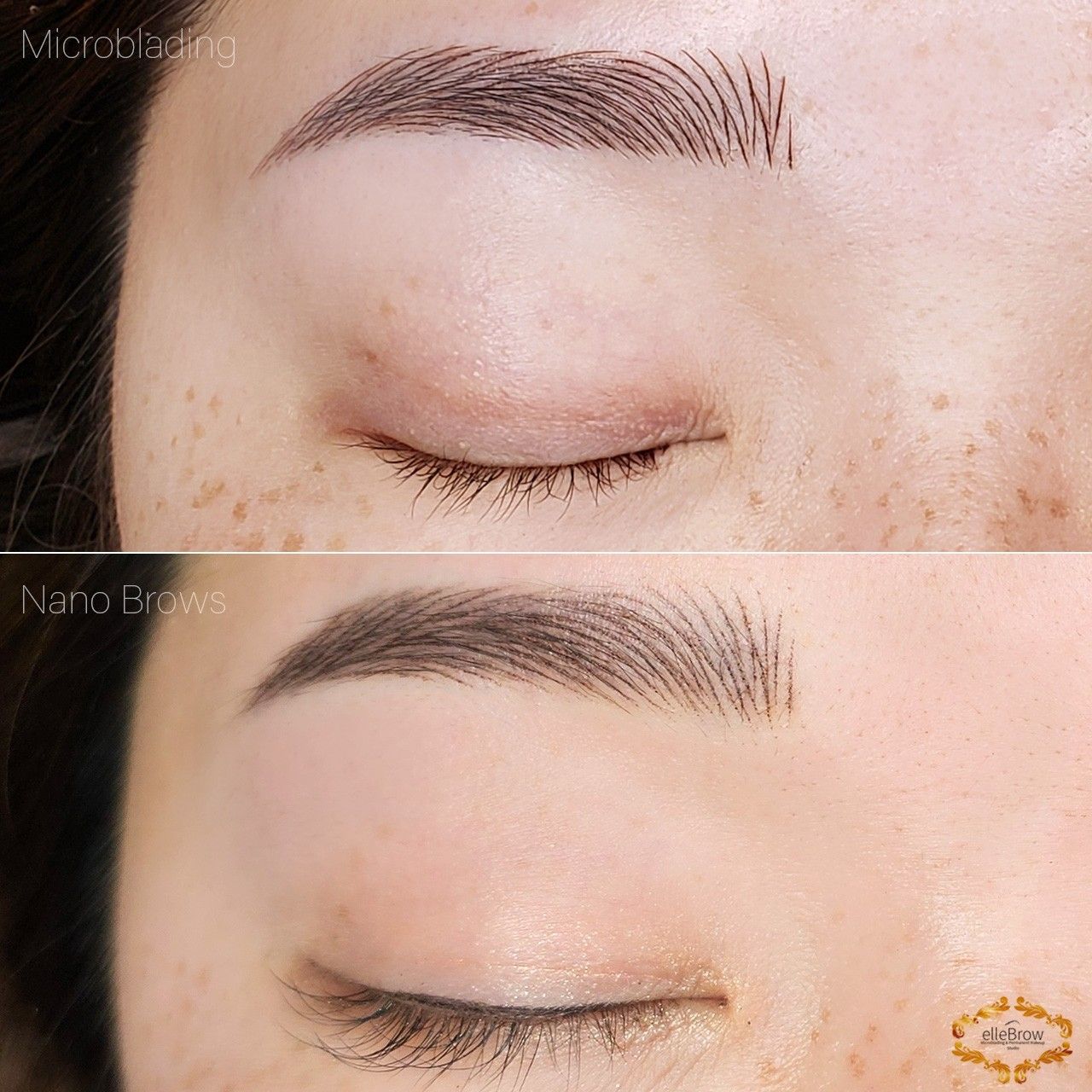
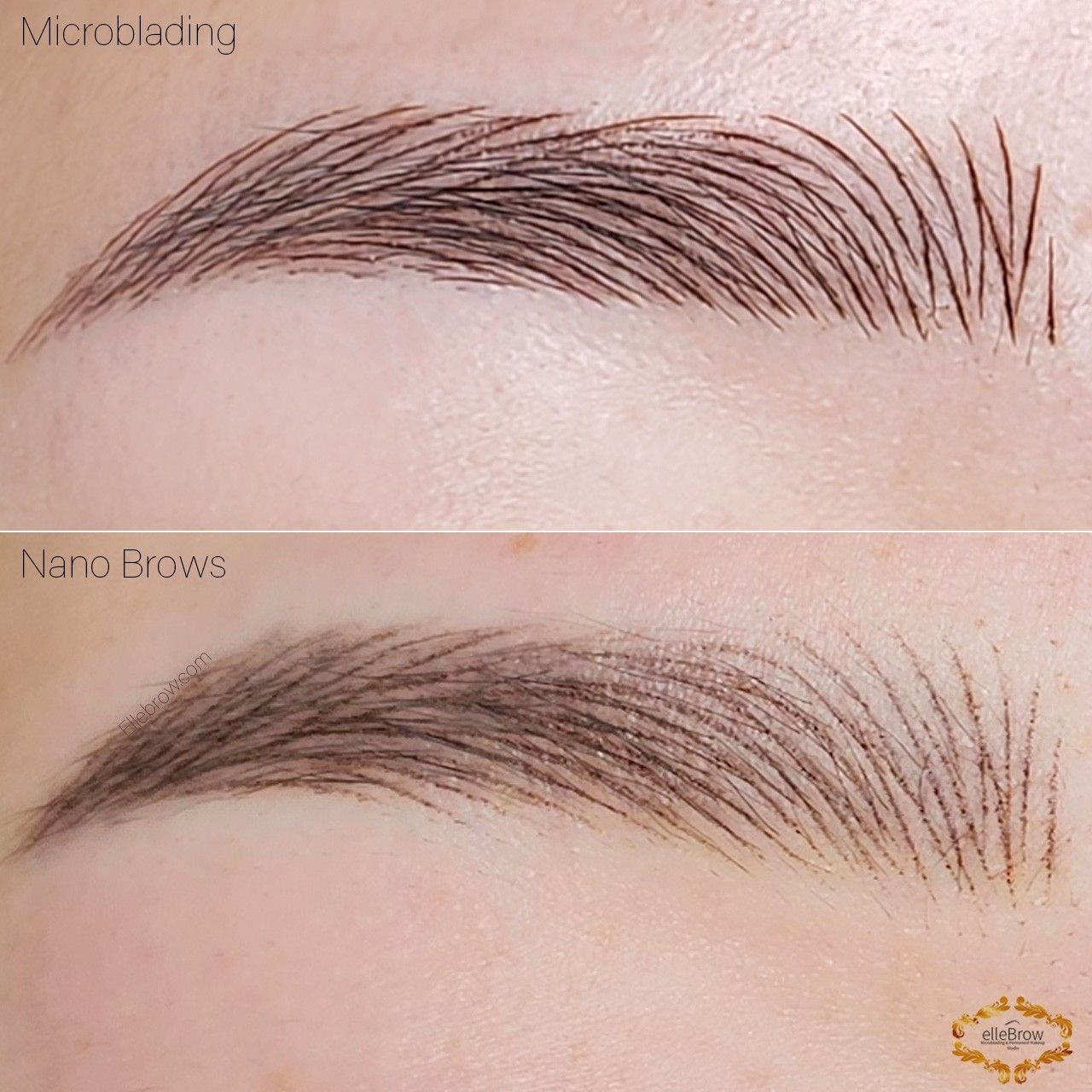
Debunking Microblading and Nano Brows Misconceptions
There are misunderstandings about these techniques that can lead to confusion. For instance, neither Microblading nor Nano Brows are typically suitable for completely filling in extremely sparse areas, with Nano Brows being less so. It's a common misconception that Nano Brows are better for oily skin; however, oily skin can pose challenges for both techniques, possibly more so with Nano Brows. This underscores the importance of a professional assessment.
Skin Type Considerations
Choosing between Microblading and Nano Brows also depends on your skin type. Both techniques generally work best on normal to dry skin, making oily skin less ideal for either (Microshading or Powder Brows might be better alternatives).
Nano Brows could be a preferred option over Microblading for those with sensitive or mature skin, due to its less invasive nature and digital precision when it come to a more shallow pigment placement within the skin.
The photo to the right shows a comparison between the Microblade and Nano Needle. The microblade tool is a row of needles that cut into the skin, with depth being controlled by the artist, while the nano needle oscillates to a depth controlled by the device.
Skin Type Considerations
Choosing between Microblading and Nano Brows also depends on your skin type. Both techniques generally work best on normal to dry skin, making oily skin less ideal for either (Microshading or Powder Brows might be better alternatives). Nano Brows could be a preferred option over Microblading for those with sensitive or mature skin, due to its less invasive nature and digital precision when it come to a more shallow pigment placement within the skin.
Healing and Aftercare
The healing process for both treatments is similar, typically complete after about 6 weeks, with an initial touch-up scheduled at this point. However, the initial side effects like redness, scabbing, flaking, and itching may be slightly more intense and longer-lasting with microblading due to more skin trauma. The aftercare routine for both treatments involves regular cleaning of the brows, applying aftercare ointment, avoiding makeup in the area, and staying away from the sun for about 14 days post-treatment.
Longevity and Maintenance
Both Microblading and Nano Brows require future sessions to maintain their appearance. Nano Brows may need more frequent touch-ups compared to Microblading, which tend to have a slightly longer lifespan due to the depth and method of pigment application.
Cost Comparison
The cost of Nano Brows and Microblading can vary based on location, expertise of the artist, and additional factors such as touch-ups. Generally, Nano Brows tend to be more expensive due to the difficulty in mastering the technique and the fact that it is a newer procedure with fewer artists proficient in it.
A touch-up session is typically required 6-8 weeks after the initial procedure to perfect the results and ensure proper pigment retention. After the initial touch-up, maintenance sessions are recommended every 12-18 months to keep brows looking their best.
Nano Brows Price Ranges (by city size)
- Large Cities (e.g., New York, Los Angeles, Chicago)
- Microblading: Typically ranges between $600 - $1,000 per session.
- Nano Brows: Usually costs between $800 - $1,400 per session.
- Touch-ups (6-8 weeks post-procedure): $150 - $400
- Smaller Cities & Suburban Areas
- Microblading: Typically ranges between $400 - $700 per session.
- Nano Brows: Usually costs between $500 - $800 per session.
- Touch-ups (6-8 weeks post-procedure): $0 - $200
Frequently Asked Questions (FAQ)
1. What is Nano Brows?
- Nano Brows is an advanced eyebrow enhancement technique that uses a digital machine with a single fine needle to create precise, natural-looking hair strokes. It is a semi-permanent procedure that offers a softer, more refined appearance compared to microblading.
2. Is Nano Brows better than microblading for long-term skin health?
- Yes, Nano Brows is generally less traumatic to the skin compared to microblading. Because it does not involve cutting into the skin with a blade, there is less scarring and reduced long-term damage, making it a gentler option for sensitive or mature skin.
3. How do I decide if Nano Brows or Microblading is right for me?
- The choice depends on your skin type, lifestyle, and desired brow style. If you have oily or sensitive skin, Nano Brows might be a better choice due to its more controlled pigment application. If you prefer bold, defined strokes, microblading may be more suitable. Consulting a professional can help determine the best option for you.
4. Does Nano Brows or Microblading look more natural?
- Both techniques can create natural-looking results, but Nano Brows typically provides a softer and more feathered appearance. The ultra-fine strokes blend seamlessly with natural hair, making it ideal for those seeking a wispy, light brow look, whereas microblading offers more defined and structured strokes.
Conclusion
Selecting between Microblading and Nano Brows is a decision based on individual preference, skin type, and the desired eyebrow style. Both techniques offer transformative results, enhancing natural beauty with unique artistic approaches.
A consultation with a professional artist, such as those at Ellebrow who perform both Nano Brows in NYC as well as Microblading for their New York City area clients, can provide personalized advice, ensuring you choose the best method for your eyebrow goals.

